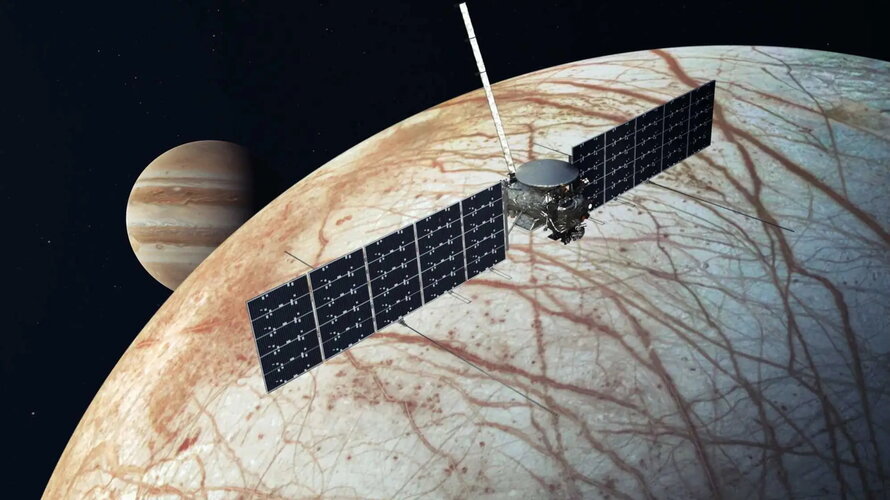

Access the video
Ganymede and Jupiter’s magnetic fields are constantly interacting with the electromagnetic fields and particles flooding the region. These come from the Sun, interstellar space, and Jupiter’s volcanic moon Io, which blasts out high-energy particles that travel throughout the Jupiter system.
One side effect of these interactions is the appearance of auroras. With Juice and Europa Clipper both in the region, it might be possible that one spacecraft, for example, could detect charged particles while the other observes the resulting auroras. This would help to better trace the transport of this material through the Jupiter system.
Jupiter has auroras around its north and south poles, similar to Earth, while Ganymede has a pair of auroral belts, bands of glowing hot gas that encircle the moon at mid-latitudes. The location of these belts provides a probe of the moon's interior, where its magnetic field is generated.
In fact, Ganymede’s auroras are a key piece of evidence for the moon having a subsurface ocean. As the moon’s magnetic field is rocked back and forth by Jupiter’s immense field, ions in the water respond by generating their own ‘induced’ magnetic field, which in turn affects the auroras.
“The observations Juice will make while in orbit around Ganymede will give us in-depth knowledge of how this planet-like moon interacts with Jupiter and its intense magnetic and radiation environment. This is essential if we’re to understand how moons form and evolve as part of a large planetary system, and what constitutes an environment most conducive to life,” adds Olivier Witasse, ESA’s Juice Project Scientist.



